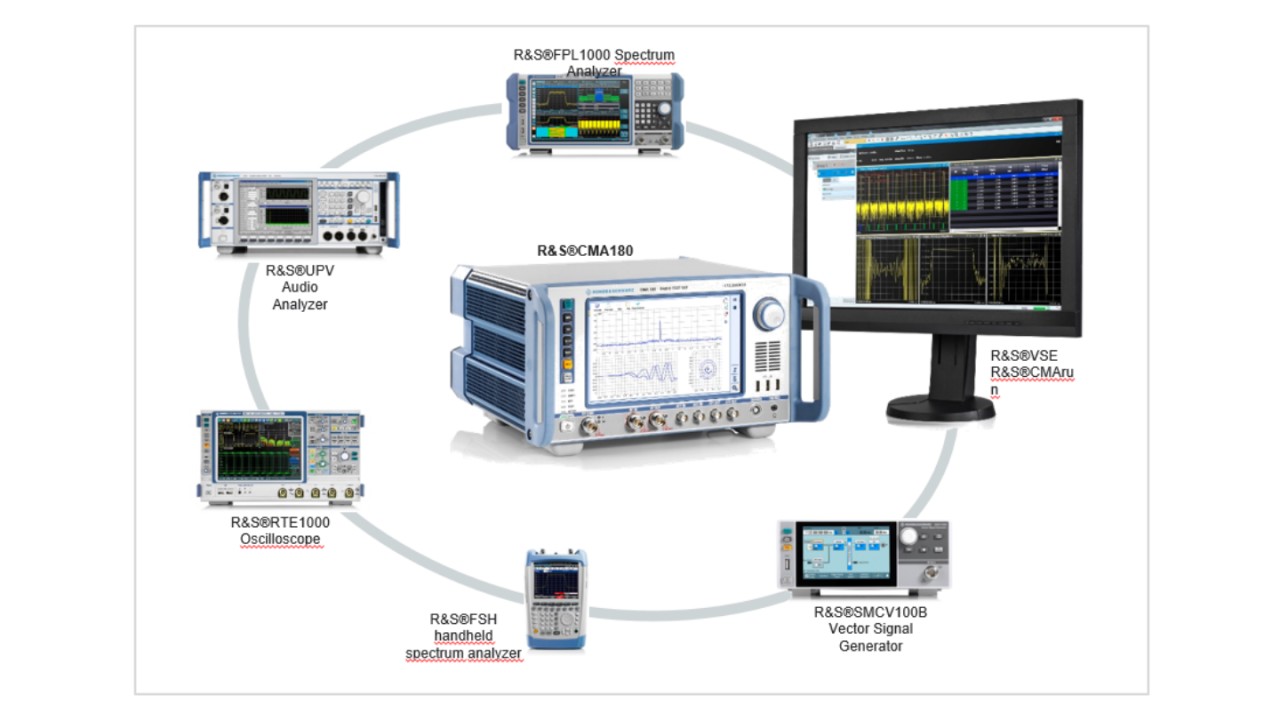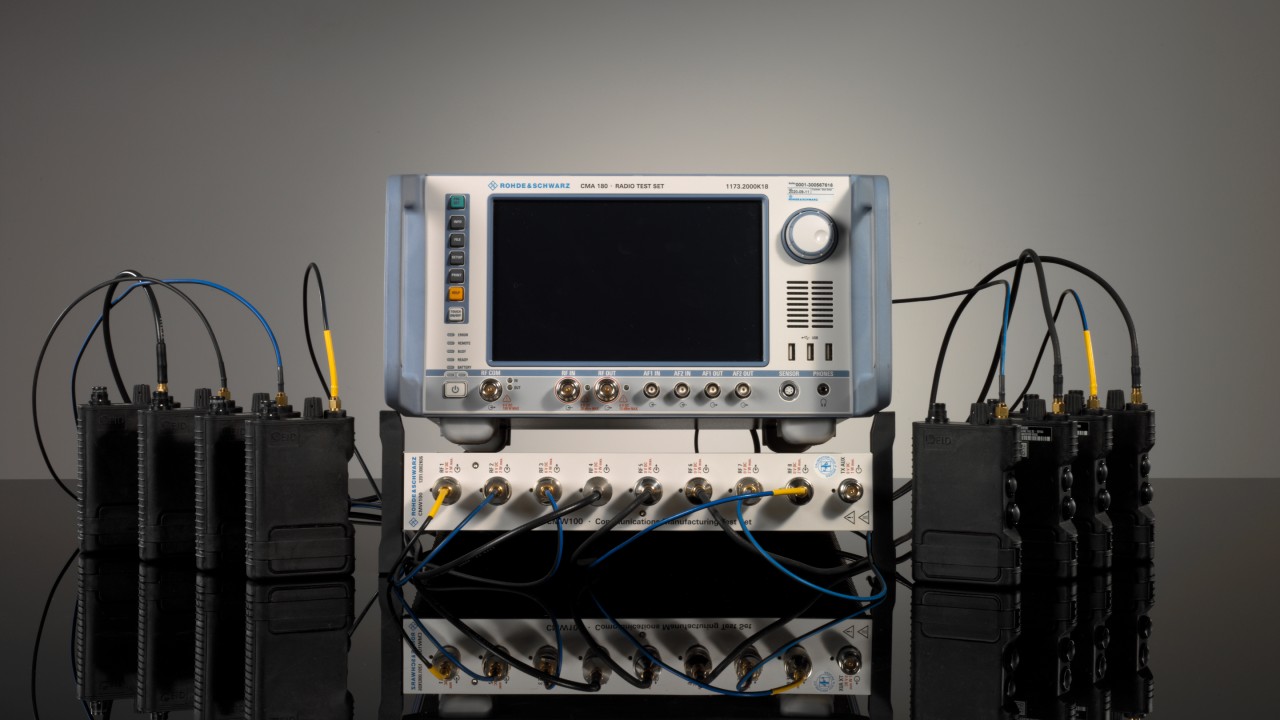One multi-purpose radio tester for all your military radio testing needs
Many professional users of classic analog and noncellular digital radio rely on the R&S®CMA180 (NATO stock number NSN: 6625-12- 397-3866) to verify the performance of portable soldier radios, on-board tactical radios or public safety APCO P-25 or TETRA radios. This performant radio test set can be used during the software defined radios engineering phase, during qualification testing or even for repair and maintenance.
The R&S®CMA180 is a radiocommunications tester for radio systems operating in the 100 kHz to 3 GHz range and 20 MHz bandwidth in the single radio testing configuration. However, its frequency range can be increased up to 6 GHz and 160 MHz bandwidth with the R&S®CMA-XRT100 option for production, with up to eight parallel radio testing at once. With a technology based fully on digital signal processing , advanced computing , featuring intuitive operation and efficient measurement capabilities, the R&S®CMA180 is an indispensable tool for performing radio measurements. This complete and versatile radio test set can perform all relevant measurements without additional tools and has small form factor that makes it portable.













